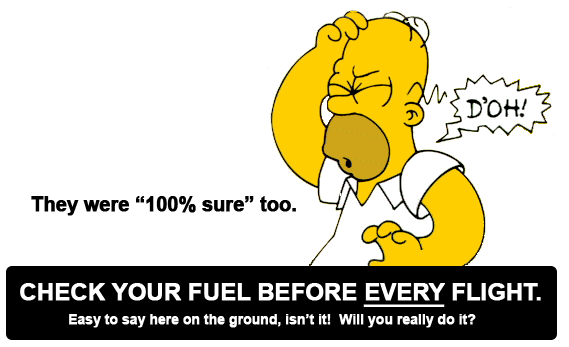by Terrence O'Hanlon, Publisher and CEO Reliabilityweb.com and Uptime Magazine
Astronauts use them, airline
pilots use them, lawyers use them, doctors and medical specialists use them but
many maintenance team members do NOT use them.
I am talking about checklists.
There is no shame in using
checklists for maintenance reliability. Checklists
can help us remember the things we already know how to do but may overlook
because we do the task so often. Can you
imagine a pilot failing to check the fuel level before taking off? It is a major cause of aviation incidents and
accidents. (Remember that next time a friend offers to take you in in his
Cessna.)
With an aging workforce and
unskilled replacements, companies are finding it challenging to maintain the
same workforce performance levels previously achieved. Checklists are one element that can help
capture some of that workforce knowledge.
Most us find it hard to
recall a list that is longer than 5-7 steps, especially in a pressurized or
reactive environment. Checklists are an
excellent stress reducer. They can make
our loves simpler and much more productive.
In his paper titled “Procedure based Maintenance”, Jack Nicholas Jr. states, “that in the field of maintenance the traditional approach has been to
rely upon the intuitive knowledge and skill of the crafts-persons who conduct
it. There is a great deal of pride of workmanship and, in all too many
organizations, a great deal of psychic income in addition to significant
overtime pay for successful emergency repairs to return equipment to operation
after unplanned shutdowns.”
Jeff
Shiver, CMRP of People and Processes reflects on the value of using checklists for maintenance planning stating “in visiting various locations, I find
that many established Planners don’t have a process to ensure consistency in
their planning approach. Sure, the initial job plan can be simple such as the
identification of crafts required, estimated hours, and a list of the required
materials as a minimum. But that’s just a start and you should be using a
continuous feedback loop to improve it over time for repetitive tasks. Ensure
consistency by using a checklist.”
Here is a checklist designed to aid the checklist
creation process and ensure that your checklist helps instead of hurts.
The use of checklists is becoming a buzzword in literary circles so
expect that to flow downhill at your company as your CEO read the latest on the
New York Times best seller list (see below).
Malcomb Gladwell posted a review of the best selling book The Checklist Manifesto: How To Get Things Right by Atul Gawande (ISBN 978-0312430009) on
Amazon.com “The Checklist Manifesto,
begins on familiar ground, with his experiences as a surgeon. But before long
it becomes clear that he is really interested in a problem that afflicts
virtually every aspect of the modern world--and that is how professionals deal
with the increasing complexity of their responsibilities. It has been years
since I read a book so powerful and so thought-provoking.
Gawande begins by making
a distinction between errors of ignorance (mistakes we make because we don't
know enough), and errors of ineptitude (mistakes we made because we don’t make
proper use of what we know). Failure in the modern world, he writes, is really
about the second of these errors, and he walks us through a series of examples
from medicine showing how the routine tasks of surgeons have now become so
incredibly complicated that mistakes of one kind or another are virtually inevitable:
it's just too easy for an otherwise competent doctor to miss a step, or forget
to ask a key question or, in the stress and pressure of the moment, to fail to
plan properly for every eventuality. Gawande then visits with pilots and the
people who build skyscrapers and comes back with a solution. Experts need
checklists--literally--written guides that walk them through the key steps in
any complex procedure. In the last section of the book, Gawande shows how his
research team has taken this idea, developed a safe surgery checklist, and
applied it around the world, with staggering success.”
If
you do not already do so, you should consider creating checklists to ensure
consistency and compliance for the maintenance related tasks that ensure
reliability at your company.
I
would like to hear about your experiences with checklists or better yet, please
share your checklists or your procedure for creating checklists with me!
Thank
you for reading this post.



Checklists as you mentioned have been used for years particularly by aviation maintenance personnel. Even today the US Navy & Marine Corps aviation technicians use a similar version to the previous Maintenance Requirement Cards or MRC Deck. These cards gave those individuals that were not as experienced as others with the same task or application epand provided a quick step by step procedure to performing the task as well as put into play other colateral duties such as providing a specific part number, date and time a retrofit was performed, it may also advise you as to how long a task may take you and a reference as to what manual or technical order covers the repair or retrofit. All of this can be very benefitial especially for those trying to stay within budget or the alotted time.
ReplyDeleteJim
ReplyDeleteThanks for commenting.
I could also see checklists being developed for all of the various applications for airborne and structure-borne ultrasound.
It would really help technicians with the ultrasound applications they do not face on an everyday basis.
Let me know if you come up with any checklists and we will help you share them with our readers - as most of them use Ultrasound.